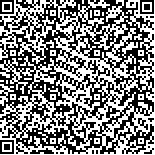| This article has been:Browse 1582Times Download 2317Times |

scan it! |
|
|
| DOI:10.13522/j.cnki.ggps.2019279 |
|
| Effects of Different Irrigation Modes on Dry Matter Accumulation and Yield Economic Benefit of Wheat |
|
ZHANG Guangyan, LI Junliang, XU Liangju, JIN Shengai
|
|
Qingdao Agricultural University, Qingdao 266109, China
|
| Abstract: |
| Our aim is to select the optimal irrigation model and provide theoretical guidance and data support for the realization of high efficiency of grain production at the same time.【Method】In this experiment, the strong gluten wheat Yannong No. 21 was taken as the research object, and we set five irrigation modes, including diffuse irrigation, small micro-spray irrigation, large micro-spray irrigation, elevated micro-spray irrigation and drip irrigation. The effects of different irrigation modes on dry matter accumulation, transport, absorption and utilization, yield and economic benefit of wheat were studied.【Result】Different irrigation modes had significant effects on the accumulation and transfer of dry matter in wheat, and the accumulation of dry matter before flowering in wheat under drip irrigation mode was 38.0%~59.2% higher than that under other irrigation modes. The contribution rate of transferred dry matter to grains in drip irrigation model was 104.8%, 421.0%, 129.0% and 126.8% higher than that in the model of diffuse irrigation, the model of small micro-spraying, the model of large micro-spraying and the model of overhead micro-spraying. In terms of nitrogen and phosphorus,all of the accumulation, transfer and the contribution rates of nitrogen (phosphorus) accumulation in wheat under drip irrigation were significantly higher than those in other irrigation models. The yield and economic benefit of wheat under drip irrigation were significantly higher than other irrigation models. In addition, the economic benefits of small micro-spraying, large micro-spraying, elevated micro-spraying and drip irrigation were 25.0%, 23.4%, 25.4% and 77.0% higher than that of the flood irrigation.【Conclusion】Therefore, under the condition of the same irrigation amount, it is recommended to choose drip irrigation mode, followed by elevated micro-spraying mode, which can promote the absorption and utilization of nutrients in wheat, improve wheat yield and economic benefits, and is suitable for wheat planting in dry areas. |
| Key words: irrigation ; dry matter accumulation; nutrient absorption; yield; economic benefit; wheat |
|
|